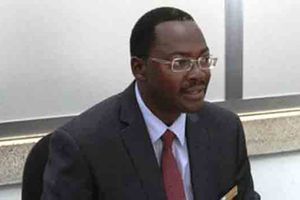What is Trump’s plan on Guatemala?
What you need to know:
- His former vice-president, Francisco Villagran Kramer, had given me information that was incontrovertible evidence of the murders.
- I also showed how close was the relationship, financially and militarily, between the Guatemalan government and President Ronald Reagan’s government.
In 1981 on the editorial page of the New York Times I wrote a column showing that the mass atrocities against the Indian population of Guatemala were carried out under the direct orders of the then president, Fernando Lucas Garcia.
His former vice-president, Francisco Villagran Kramer, had given me information that was incontrovertible evidence of the murders. I also showed how close was the relationship, financially and militarily, between the Guatemalan government and President Ronald Reagan’s government.
At the time Regan was considered to be the “Teflon President”. No scandal stuck to him. Certainly not the evidence of a column in the New York Times. The reaction in Washington was zero. A brief while later Amnesty International published a long report documenting an act of genocide.
After a number of changes of government in Guatemala, President Efrain Rios Montt came to power. Reagan’s assistant secretary of state for human rights, Elliott Abrams, wrote that President Efrain Rios Montt’s rule had “brought considerable progress” on human rights. He also declared that the “amount of killings of innocent civilians is being reduced step by step”. In fact it was the reverse.
It was not until 1996 under President Alvaro Arzu that the death squads run by the army and the government were finally dismantled.
Nearly 40 years later, in 2013, Montt was convicted in court of “genocide” and sentenced to prison for 80 years.
It was the first time that a former head of state had been found guilty of genocide by a court in his own country.
Prosecutors said that he had presided over the war’s bloodiest phase.
Under Reagan, embassy officials had trekked up to the scene of massacres and reported back to Washington the army’s line that the guerrillas were doing the killing.
According to de-classified diplomatic cables, over the next two years USD 15 million in vehicles, spare parts and arms from the US reached the Guatemalan military. There was military training too.
Congress re-imposed the ban (the first was done by Jimmy Carter) in 1990 but clandestine aid continued unknown to President Carter. More military aid came from such allies as Taiwan, Israel, Argentina and Chile. (The latter two ruled by military dictatorships that were carrying out terrible human rights abuses themselves.)
Progress has been made, yet most of the time at a snail-like pace. The murder of Indians has stopped.
However, other problems abound. Only last week President Jimmy Morales, who was not involved in the genocide, said that the head of a UN anti-corruption mission (partly funded by the US) would not be allowed back into Guatemala. For some time allegations of corruption have swirled around Morales’s family.
As recently as this May seven human rights activists were murdered, although it is not suggested that Morales is behind them.
The first real turning point was the work of President Alvaro Arzu. The second was the appointment of Claudia Paz y Paz as Attorney-General, by President Alvaro Colom, the country’s first left-leaning president in 53 years.
A former human rights lawyer, aged only 44, she was a no-nonsense woman who put a number of notorious drug dealers and human rights criminals behind bars, and indicted Rios Montt.
Her rigorous policies helped lower the horrendous crime rate, one of the world’s three worst. Forbes magazine described her as “one of the five most powerful women changing the world.”
She was helped by the total turn around of Washington’s long-time policy, thanks to President Bill Clinton.
She was also helped by the Inter-American Court of Human Rights that had ruled in 2004 that genocide had occurred and that the Rios Montt regime was responsible for it. Also an international arrest warrant had been issued by a Spanish judge in 2006. Both these events had helped change the political and judicial atmosphere.
Surprisingly, Rios Montt barely mentioned the United States when he put forward his arguments in his defence. But, as the New York Times reported , “Washington’s alliance with him was not forgotten in the giant vaulted room where the current American ambassador, Arnold Chacon, sat as a spectator in a show of support for the trial”. (Chacon was appointed by the Administration of Barack Obama.)
Under President Donald Trump very few appear to be concerned about Guatemala. That doesn’t mean nothing is going on between Washington and Guatemala.
It just means that the press seemed to have lost interest until last week’s story. Will the Trump Administration support the cause of law and anticorruption or will it just let things be?




